Wilderness Art in Early America
We have learned that the Romantic movement was beginning to have an influence among early, well-educated Americans, and, in particular, influencing attitudes about nature and wilderness. Two American writers who embraced Romantic ideas, and who wrote in positive terms about nature and wilderness, were William Byrd (a surveyor) and William Bartram (a Botanist).
The Romantic movement also influenced the art world. The remainder of the material, below, concentrates on visual art, and, most directly on landscape art related to our discussion of wilderness in early America.
Landscape Painting Terms
First let's look at some landscape painting terms:
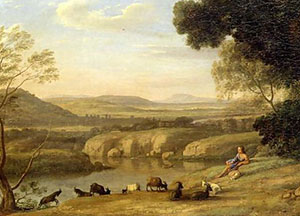 Beauty (Beautiful)- Balance, smoothness, delicacy, serene, calm landscapes. Idealized natural forms in a balanced composition. The prime example is Claude Lorrain (1600-1682) a French landscape artist (an example of Lorrain's work is shown to the right). Paintings are realistic but they are dreamlike. They are infused with a golden or silver light. Through his art, Lorrain opened people to the beauties of nature. A century later, people might look for picnic site that included elements from his paintings. The British would even model gardens after his paintings.
Beauty (Beautiful)- Balance, smoothness, delicacy, serene, calm landscapes. Idealized natural forms in a balanced composition. The prime example is Claude Lorrain (1600-1682) a French landscape artist (an example of Lorrain's work is shown to the right). Paintings are realistic but they are dreamlike. They are infused with a golden or silver light. Through his art, Lorrain opened people to the beauties of nature. A century later, people might look for picnic site that included elements from his paintings. The British would even model gardens after his paintings.
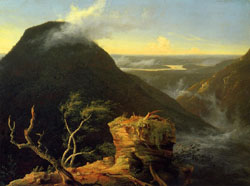 Picturesque. Rough, craggy trees and foliage, sharp contrasts of light and shadow. Emphasis is on variety and contrast rather than idealized nature. Since this aesthetic is between beautiful and sublime, it evokes a sense of reality of the landscape. It can stimulate the mind and imagination. An example is Thomas Cole's "Sunny Morning on the Hudson River" (pictured to the right).
Picturesque. Rough, craggy trees and foliage, sharp contrasts of light and shadow. Emphasis is on variety and contrast rather than idealized nature. Since this aesthetic is between beautiful and sublime, it evokes a sense of reality of the landscape. It can stimulate the mind and imagination. An example is Thomas Cole's "Sunny Morning on the Hudson River" (pictured to the right).
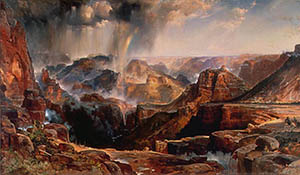 Sublime. Vastness, terror. World of darkness and storm. Tremendous mountains, deep valleys, storms. The sublime is also a term that implies an association with God and nature. Deists believe that in nature we can see God most clearly. An example is Thomas Moran's "Chasm of the Colorado" (pictured to the right).
Sublime. Vastness, terror. World of darkness and storm. Tremendous mountains, deep valleys, storms. The sublime is also a term that implies an association with God and nature. Deists believe that in nature we can see God most clearly. An example is Thomas Moran's "Chasm of the Colorado" (pictured to the right).
Painters
Let's look at some important painters of early America who are known for their representations of wilderness.
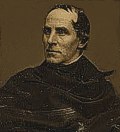 THOMAS COLE (1801- 1848) Transcendental Generation. Generational Type: Idealistic
THOMAS COLE (1801- 1848) Transcendental Generation. Generational Type: Idealistic
Thomas Cole was born in England and came to US when 17 years old. He settled in the upper Ohio valley. Eventually, Cole began traveling through wild areas and painting them. In his paintings, he broke with tradition and left out men and women - and the signs of human habitation.
One way of summing up his work is a poem he wrote called "The Wild"
Friends of my heart, lovers of nature's works,
Let me transport you to those wild, blue mountains
That rear their summits near the Hudson's wave;
Though not the loftiest that begirt the land,
They yet sublimely rise, on their heights
Your soul may have a sweet foretaste of heaven
The two themes found in the poem (the landscape and heaven) are found in his work. Since he painted in the Hudson River area, his work and others that followed them became known as the Hudson River School of painting. Members of the Hudson River School are landscape artists that broke with traditions of Claude Lorrain. They were greatly influenced by Romantic movement and found much of their inspiration in nature.
His paintings . . .
Sunny Morning on the Hudson River. 1827, Oil. View Painting Here.
Landscape with Tree Trunks. 1828, Oil. View Painting Here.
The Course of Empire: 1836, Oil. The "Course of the Empire" consists of a series of five paintings: Savage State, Pastoral State, Consummation of the Empire, Destruction, and Desolation. Cole chose something from Byron to describe the series of paintings (Byron, as I've mentioned before, was a leading figure in the Romantic movement).
There is the moral of all human tales
'Tis but the same rehearsal of the past
First Freedom, and then Glory: when that fails
Wealth, vice, corruption
The Oxbow. 1836. Oil. View Painting Here.
Schroon Mountain, Adirondacks. 1838, Oil. View Painting Here.
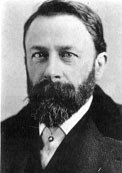 ALBERT BIERSTADT (1830-1902) Gilded Generation Generational Type: Reactive.
ALBERT BIERSTADT (1830-1902) Gilded Generation Generational Type: Reactive.
(The Gilded generation takes things a step further. Cole painted the East. Albert Bierstadt went west. )
Bierstadt was born in Germany. His family brought him to the US when he was two years old. He became a painter, and to supplement his income, he taught painting. In 1859, he joined the survey team of Colonel Fredrick W. Lander who was working on what became known as the "Lander Road" an alternative route of the Oregon trail from South Pass to Fort Hall. After returning from the Lander Survey, he re-worked his sketches into paintings which sold quite well. In 1863, he traveled west and visited Yosemite Valley. In 1864 "The Rocky Mountains" exhibit brought him immediate fame.
His paintings . . .
Wind River Country. 1860, Oil. View Painting Here.
Yosemite Valley. 1866, Oil. View Painting Here.
Buffalo Trail. 1867-68, Oil. View Painting Here.
Sierra Nevada. 1872, Oil. View Painting Here.
Lower Yellowstone Falls. 1880, Oil. View Painting Here.
Hetch Hetchy Valley View Paintings Here.
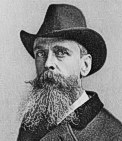 THOMAS MORAN (1837-1926) Gilded Generation
THOMAS MORAN (1837-1926) Gilded Generation
Thomas Moran's and Thomas Cole's backgrounds were similar in some respects. Both came from ugly, industrialized areas of England. Both emigrated in their youth: Moran emigrated when he was 7 and Cole when he was 17.
Moran began by apprenticing to an engraving firm. He sold a few water colors on the side, and with this modest success he started a small studio.
Moran's break came when caught the attention of geologist Dr. Ferdinand Hayden who was organizing an expedition to Yellowstone and who subsequently invited Moran on the expedition.
His paintings . . .
Grand Canon of the Yellowstone (1872, Oil). View Painting Here.
Chasm of the Colorado (1873, Oil) View Painting Here.
Mount of Holly Cross. (1875, Oil). View Painting Here.
Ruby Range (1879, Watercolor). View Painting Here.
Shoshone Falls (1874-75, Oil). View Painting Here.
The Photographers
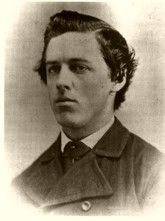 WILLAM HENRY JACKSON (Progressive Generation, but just barely) 1843-1942.
WILLAM HENRY JACKSON (Progressive Generation, but just barely) 1843-1942.
Jackson started his career in 1864 as a photographer's assistant in Vermont. He was fascinated with the west. He first went to California in 1866. On this journey, he worked as a bull bullwhacker, running a wagon carrying 8,000 pounds of goods pulled by 12 massive oxen. To get to California, he and his companions followed Oregon Trail to Salt Lake City. There he joined a different wagon train, eventually reaching California. In 1867, he reversed course, driving horses from California to Nebraska. Afterwards, he settled down to photographic work in Omaha. His big break as a photographer came in 1870 when Ferdinand Hayden invited him on his expedition to Yellowstone, the same one Thomas Moran was on.
His photographs . . .
Mammoth Hot Springs (1871) View Photograph Here.
Old Faithful (1871) View Photograph Here.
Mt. Moran (1872) View Photograph Here.
Mount of the Holy Cross (1873) View Photograph Here.
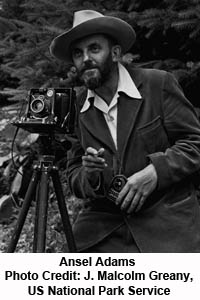 ANSEL ADAMS (GI Generation - Civic Type) 1902 - 1984
ANSEL ADAMS (GI Generation - Civic Type) 1902 - 1984
Ansel Adams was Born in San Francisco. As a teenager, he joined the Sierra Club and worked at the club's visitor center in Yosemite. He began taking photos and quickly developed an artful style and technique. At his death in 1984, he was one of the foremost photographers in the world. He is best known for his black-and-white photographs of the American West, especially Yosemite National Park.
His Photograph . . .
Moon And Half Dome (1960) View Photograph Here (Note: to assure that the copyright is fully protected, this link goes directly to a reproduction of the photograph on the Ansel Adam's Gallery site.)
[End]
